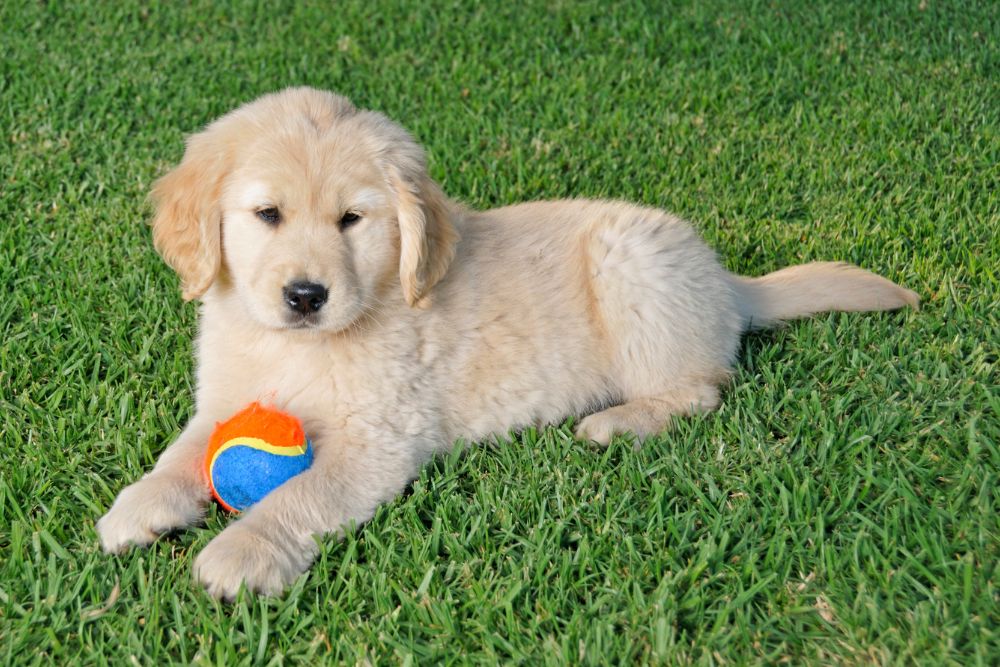
Are you a pet owner considering artificial grass for your furry companion? This guide compares artificial and real grass, focusing on pethealth, costs, and environmental impacts. We’ll explore the benefits of artificial turf for pets, backed by real owner experiences. By the end, you’ll have the knowledge to make the best choice for your pet‘s outdoor space, balancing comfort, maintenance, and long-term value.
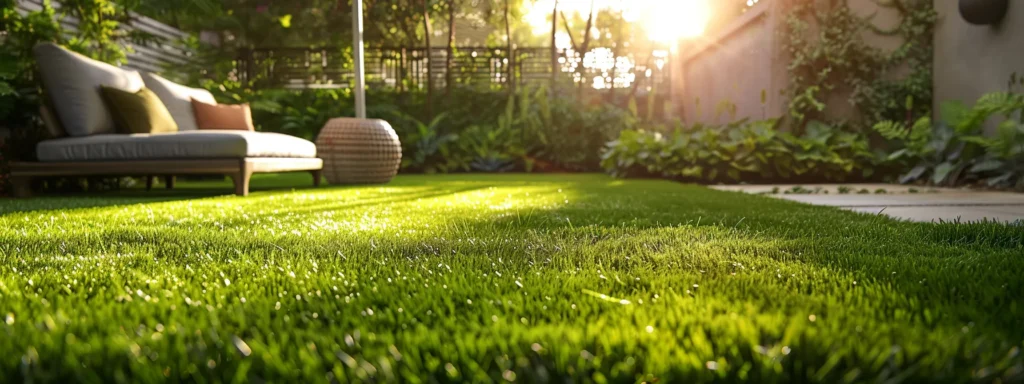
We’ll explore the key characteristics of artificial grass and real grass for pets, comparing their maintenance requirements. From synthetic turf options suitable for baseball fields to natural soil-based lawns that thrive in rain, we’ll examine how different brands of grass perform. Visit our about us page to learn more, and explore arturficialwholesale products. This comparison will help pet owners make informed decisions about their outdoor spaces.
Artificial grass offers unique benefits for pet owners. Unlike natural grass, synthetic turf resists wear and tear from active dogs, making it ideal for a dog park or backyard play area. Its durable fibers withstand frequent use without developing bare patches or mud puddles.
We’ve found that artificial grass maintains its appearance year-round, regardless of weather conditions. This consistency is particularly advantageous for urban areas prone to heat island effects, where natural grass might struggle. Fake turf provides a consistently green, lush-looking yard without the need for watering or mowing.
Our experience shows that artificial grass is highly versatile. It can be installed in various settings, from small urban yards to large association football fields. This adaptability makes it an excellent choice for pet owners with limited outdoor space or those seeking a low-maintenance solution for larger areas.
Real grass offers a natural feel and appearance that many pet owners prefer. We’ve observed that dogs often enjoy digging and rolling in real turf, which can be both a pro and a con. Unlike AstroTurf, real grass allows for natural drainage and can help prevent debris accumulation.
Natural grass requires regular maintenance, including mowing, watering, and fertilizing. In England, where rainfall is frequent, real grass often thrives with minimal intervention. However, high-traffic areas in yards with pets may develop bare patches, necessitating reseeding or turf replacement.
Real grass provides environmental benefits that artificial alternatives can’t match. It helps cool the surrounding area, reduces noise pollution, and supports local ecosystems. While artificial turf for sale may offer convenience, real grass contributes to biodiversity and can even help filter pollutants from the air and water.
We’ve found that artificial grass requires significantly less maintenance than real grass, especially for pet owners. The sustainability of synthetic turf is evident in its reduced need for water, mowing, and fertilizers. Our customers appreciate the time and cost savings associated with artificial grass, particularly in high-traffic areas like tennis courts.
Real grass demands regular upkeep, including mowing, watering, and addressing pet-related damage. We often see pet owners struggle with maintaining a lush lawn due to pet waste and wear. In contrast, artificial grass withstands pet activity better, though it may require occasional rinsing to prevent odor buildup.
The initial price of artificial grass installation is higher than seeding a natural lawn. However, we’ve calculated long-term savings for many clients when considering reduced water bills and eliminated lawn care expenses. Our customer service team frequently assists pet owners in choosing the right type of artificial grass to prevent matting and ensure longevity:
| Maintenance Task | Artificial Grass | Real Grass |
|---|---|---|
| Mowing | Not required | Weekly |
| Watering | Occasional rinsing | Regular, depending on climate |
| Fertilizing | Not required | Seasonal |
| Pet waste cleanup | Simple removal and rinse | Removal and potential lawn repair |
The choice between artificial and real grass affects more than just your lawn‘s appearance. It impacts your pet‘s daily life, shaping their health and happiness in ways you might not expect.
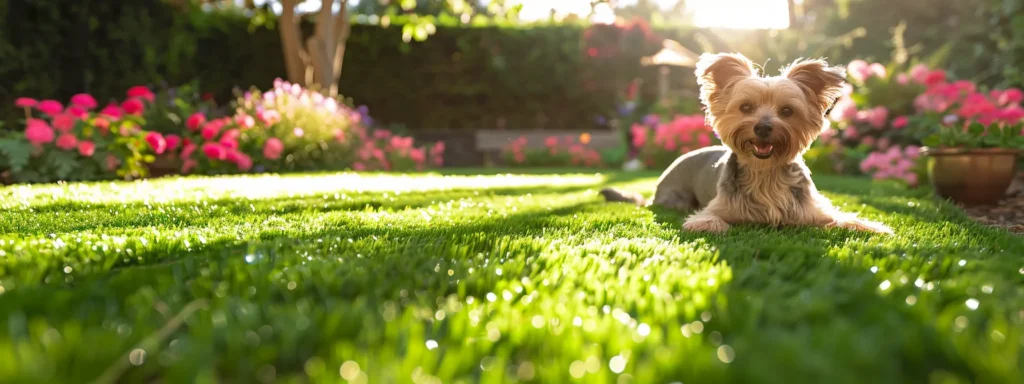
We examine the impact of artificial turf on pethealth, focusing on safety standards, allergies, and heat retention. Our analysis covers pet turf flooring options and synthetic turf installation processes, considering how these factors affect pets. We’ll explore potential sensitivities to materials used in artificial grass and discuss budget-friendly alternatives to pesticide-treated natural lawns.
We’ve thoroughly evaluated the safety standards for synthetic grass, especially for artificial turf for dogs. Our research shows that high-quality artificial turf meets strict safety regulations, ensuring it’s free from harmful chemicals and suitable for pets. We prioritize products that withstand intense sunlight and maintain their aesthetics, even in harsh Kentucky summers.
Our team has tested various landscape options, focusing on durability and pet-friendliness. We’ve found that certain artificial grass types are specifically designed to resist wear from dog claws and provide proper drainage for pet waste. This attention to detail in manufacturing ensures a safe environment for pets to play and relax.
We always recommend artificial turf that’s lead-free and uses non-toxic infill materials. Our experience has shown that these safety measures are crucial for pethealth and owner peace of mind. Here’s a list of key safety features we look for in pet-friendly artificial grass:
We’ve observed that artificial turf can significantly reduce allergens compared to natural grass, benefiting pets with sensitivities. Unlike baseball fields or backyard lawns that may harbor pollen and other irritants, artificial grass doesn’t produce these common allergens, potentially easing respiratory issues in sensitive pets.
Our experience shows that high-quality artificial turf, designed with proper drainage and lead-free materials, minimizes the risk of skin irritations in pets. We’ve seen fewer cases of contact dermatitis in dogs playing on well-maintained synthetic surfaces compared to those on natural grass treated with pesticides or fertilizers.
We always recommend monitoring pets for any signs of sensitivity when introducing artificial turf to their environment. While rare, some pets may experience initial discomfort due to the texture change or residual manufacturing odors. However, we’ve found that most pets quickly adapt to the new surface without issues, enjoying the consistent, wear-resistant play area.
We’ve observed that artificial turf can retain more heat than natural grass, potentially affecting pets’ comfort. Our tests show that on hot days, pet-friendly turf surfaces can become significantly warmer than surrounding areas. We recommend providing shaded areas and monitoring pets during peak heat hours to ensure their well-being.
Our experience has shown that proper irrigation systems can help mitigate heat retention in artificial grass. By incorporating advanced water resources management, we’ve successfully reduced surface temperatures, making the turf more comfortable for pets. We advise pet owners to consider installing misting systems or sprinklers to cool the turf during hot weather.
We’ve found that some pets may be more sensitive to heated surfaces, particularly those with shorter coats or older animals. To address this, we offer specialized infill options that help reduce heat absorption and promote a cooler surface. Additionally, we recommend regular cleaning to prevent bacteria growth, which can be exacerbated by warm conditions, ensuring a safe and hygienic environment for pets.
Money matters when it comes to pets. Let’s explore the costs of artificial turf for pet owners.
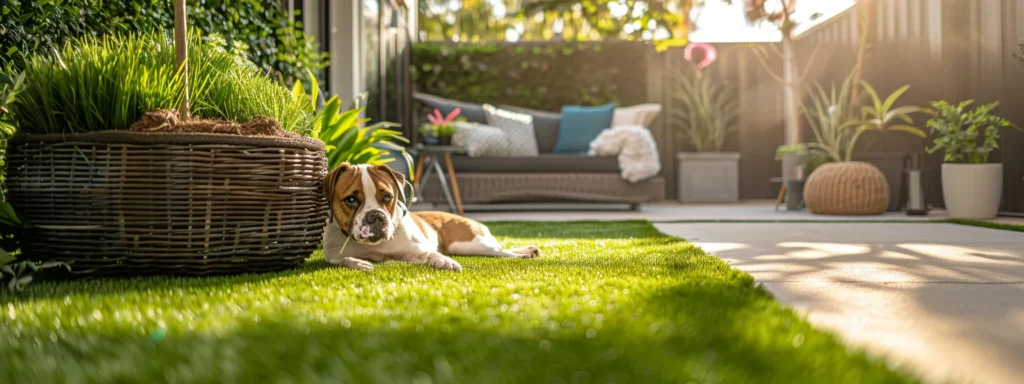
We’ll examine the financial aspects of choosing between artificial and real grass for pet owners. Our analysis covers upfront installation costs, including waterproofing and lawn turf materials. We’ll also explore long-term maintenance expenses and provide a cost-benefit analysis of artificial grass. Our estimates consider factors like tire-based infill and inventory management to give pet owners a comprehensive view of their options.
We take pride in offering high-quality artificial grass installations that can withstand Arizona‘s harsh climate. Our upfront costs include premium materials and expert installation, ensuring longevity and performance in extreme temperatures. While the initial investment may be higher than natural grass, we’ve found that our clients appreciate the long-term benefits and reduced maintenance needs.
Our installation process incorporates advanced technology to minimize microplastics release, addressing environmental concerns. We use innovative backing materials and installation techniques that significantly reduce the potential for microplastic shedding. This approach not only protects the environment but also enhances the durability of the artificial turf, providing better value for our customers.
In our experience, the upfront costs of artificial grass installation in Arizona vary based on factors such as yard size, terrain, and desired grass type. We provide detailed, transparent quotes that outline all expenses, including site preparation, materials, and labor. Our team works closely with clients to find solutions that fit their budget while meeting their specific needs for a pet-friendly outdoor space.
We’ve found that long-term maintenance expenses for artificial grass are significantly lower compared to natural lawns. In Miami‘s climate, our artificial turf requires minimal upkeep, saving homeowners time and money on watering, mowing, and fertilizing. This reduction in ongoing costs often offsets the initial installation investment within a few years.
Our experience in New Jersey shows that artificial grass stands up well to harsh winters, reducing the need for seasonal lawn care. Unlike natural grass, our astro turf for sale doesn’t require reseeding or patching after winter damage, leading to consistent, year-round savings. We’ve calculated that many of our clients save up to 70% on annual lawnmaintenance costs.
Incorporating artificial grass into hardscape designs has proven cost-effective for our customers. By eliminating the need for irrigation systems and reducing water bills, especially in drought-prone areas, artificial turf provides substantial long-term savings. We’ve seen particular success with pet owners who appreciate the durability and easy cleaning of our artificial grass products.
We’ve conducted a thorough cost-benefit analysis of artificial grass for pet owners in Dallas. Our findings show that while the initial construction costs are higher than concrete or traditional garden installations, artificial turf offers significant long-term savings. We calculate that most homeowners recoup their investment within 3-5 years through reduced water bills, elimination of lawn care services, and decreased pet-related lawn damage.
Our experience in carpet and artificial grass installation reveals that synthetic turf outperforms natural grass in durability, especially in high-traffic pet areas. We’ve seen instances where artificial grass lasts up to 15 years with proper maintenance, far exceeding the lifespan of traditional lawns in similar conditions. This longevity translates to substantial cost savings over time, particularly for pet owners dealing with frequent lawn repairs.
We recognize that the benefits of artificial grass extend beyond monetary savings. Our clients report increased property values and enhanced curb appeal, which can be significant advantages in the competitive Dallas real estate market. Additionally, we’ve observed that artificial turf provides a consistently clean and safe play area for pets, reducing the tracking of mud and grass into homes:
| Aspect | Artificial Grass | Natural Grass |
|---|---|---|
| Initial Cost | Higher | Lower |
| Water Usage | Minimal | High |
| Maintenance | Low | High |
| Durability | High | Variable |
| Pet-Friendliness | Consistent | Weather-dependent |
Cost matters, but so does our planet. Let’s explore how artificial grass impacts the environment.
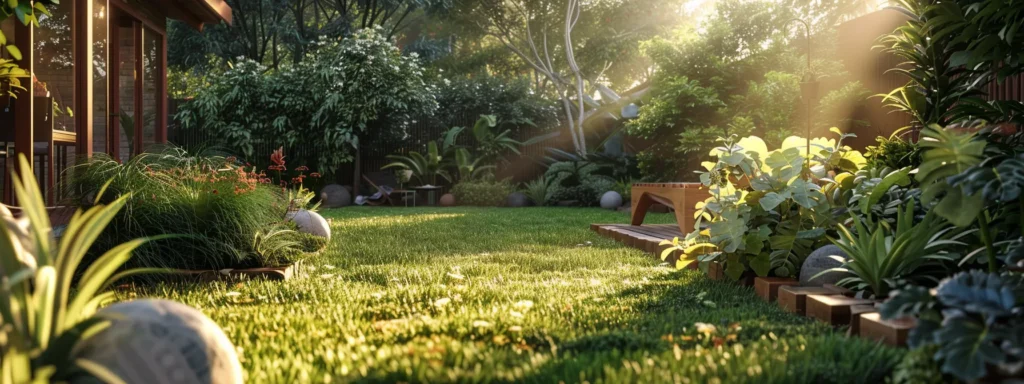
We examine the environmental impact of artificial and real grass for pet owners. Our analysis covers water usage and sustainability, addressing concerns about irrigation and climate change. We explore chemical treatments and their effects on pet safety, including the use of crumb rubber. Finally, we discuss the biodegradability of artificial turf, considering its long-term environmental implications in places like New Jersey.
We’ve observed that artificial grass significantly reduces water consumption compared to natural lawns, especially in drought-prone areas. Our turf installation process incorporates advanced drainage systems, minimizing water waste and promoting sustainability. This approach not only conserves precious water resources but also supports local wildlife by reducing the need for excessive irrigation.
In our experience, the water savings from artificial grass extend beyond residential use to large-scale applications like sports fields. We’ve worked on projects similar to the Astrodome, where artificial turf has proven to be a game-changer in water conservation for expansive areas. The durability of modern synthetic grass also reduces the frequency of replacements, further contributing to sustainability efforts.
Our commitment to environmental responsibility includes using recycled materials in our artificial grass products. We’ve developed innovative recycling processes that repurpose old synthetic turf, reducing landfill waste. This circular approach to turf production aligns with our goal of providing sustainable solutions for pet owners and sports facilities alike.
We’ve found that artificial turf for dogs eliminates the need for harmful chemical treatments often used on natural grass. Our turf grass cost analysis shows long-term savings due to reduced maintenance requirements, including the absence of pesticides and herbicides. This chemical-free environment significantly enhances pet safety, reducing the risk of exposure to toxic substances.
Our experience with installing artificial turf on sports pitches has demonstrated its durability and resistance to wear. Unlike natural grass that may require frequent chemical treatments to maintain appearance, our artificial grass solutions provide a consistently safe surface for pets. We’ve observed fewer incidents of pet-related allergies and skin irritations on our installed turf compared to chemically treated natural lawns.
We offer flexible payment options, including credit card transactions, to make our pet-safe artificial grass solutions more accessible. Our commitment to pet safety extends beyond installation; we provide ongoing support and maintenance advice to ensure the longevity and safety of your turf investment. Here are key benefits of our chemical-free artificial turf for pets:
We’ve researched the biodegradability of artificial turf extensively, considering its environmental impact. Our findings show that most artificial grass products are not biodegradable, raising concerns about long-term pollution. We’ve observed that the disposal of synthetic turf can contribute to carbon emissions and landfill waste.
Our artificial turf installation process takes into account environmental laws and regulations. We strive to minimize the ecological footprint of our products by using recycled materials where possible. For balcony installations, we offer specialized solutions that balance durability with environmental considerations.
We’re actively exploring new technologies to improve the biodegradability of artificial turf. Our research and development team is working on innovative materials that could potentially break down more easily without compromising performance. We believe this approach will help address environmental concerns while still providing the benefits of artificial grass for pet owners.
The sun beat down on the synthetic lawn, unchanging and resilient. As the family dog bounded across the green expanse, its paws found comfort in the cool, durable blades.
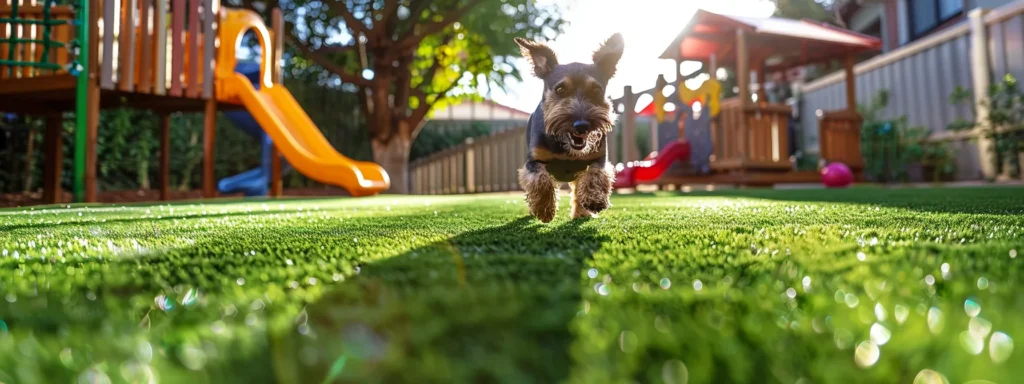
We explore how artificial grass enhances pets’ outdoor experiences, comparing it to real grass. Our analysis covers design options for residential turf, ways to create engaging play spaces, and the durability of astro turf for dogs in various weather conditions. We’ll examine how synthetic grass performs without fertilizer, even in challenging areas like basements, and its resistance to issues like leaf accumulation.
We offer a wide range of design options for artificial grass installations, allowing pet owners to customize their outdoor spaces. Our investment in advanced manufacturing techniques enables us to create unique textures and colors that mimic natural grass while providing superior durability for pets. From lush, green lawns to specialized play areas, we tailor our artificial turf solutions to meet the specific needs of each pet and owner.
Our team uses high-quality sandinfill to enhance the feel and performance of artificial grass for pets. This not only improves drainage but also helps maintain a cooler surface temperature, making it comfortable for pets year-round. We’ve found that this attention to detail in the installation process significantly increases pet owners’ satisfaction with their artificial grassinvestment.
We utilize data-driven approaches to optimize artificial grass designs for stormwater management. By incorporating permeable layers and strategic drainage systems, our installations help mitigate runoff issues common with natural lawns. This innovative approach not only benefits the environment but also ensures a dry, clean play area for pets, even after heavy rainfall.
We’ve transformed countless Houston backyards into pet paradises using our ArTURFicial Wholesale products. Our artificial grass creates safe, odor-resistant play areas that withstand intense use, much like the turf in professional stadiums. We’ve seen pets enjoy these spaces year-round, regardless of weather conditions.
Our warranty covers wear and tear, giving pet owners peace of mind about their investment. We’ve installed artificial turf in various outdoor settings, from small urban patios to expansive suburban lawns, always prioritizing pet safety and comfort. Our clients report increased outdoor activity for their pets after installation.
We’ve developed specialized infill options that enhance play experiences for pets. These materials provide cushioning for active dogs and help maintain a cool surface temperature, even during Houston‘s hottest months. Our installations often include strategically placed obstacles and textures to create engaging play environments for pets.
We’ve found that our artificial grass products offer superior weather resistance compared to natural lawns, ensuring year-round use for pets. Our infill options are specifically designed to withstand extreme temperatures, maintaining a comfortable surface for pets in both hot summers and cold winters. This consistent performance has led to high customer satisfaction among pet owners in Glendale, AZ, and surrounding areas.
Our outdoor turf installations have proven to be resilient against heavy rainfall and snow, providing a stable play area for pets regardless of seasonal changes. We’ve received positive feedback from members of the glendale az chamber about how our artificial grass maintains its aesthetic appeal and functionality throughout the year, eliminating the muddy mess often associated with natural lawns during wet seasons.
We’ve observed that pets can enjoy our artificial grass lawns even during periods when natural grass might be dormant or damaged by frost. Our products resist fading and wear from UV exposure, ensuring a lush, green appearance that enhances outdoor spaces year-round. This durability translates to extended play times for pets and reduced maintenance for owners, contributing to overall satisfaction with our artificial turf solutions.
Pets loved the grass, but owners loved it more. Real stories showed how lives changed with artificial turf.
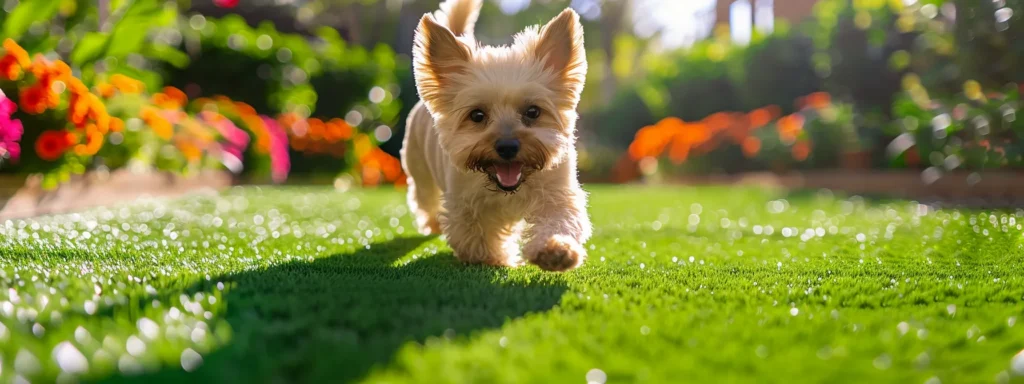
We’ve gathered real-life experiences from pet owners who switched to artificial grass, comparing it to natural lawns. Our case studies reveal how pets adapt to indoor turf and outdoor installations. We’ll share feedback on pet behavior and health changes, and provide recommendations for choosing the right turf. Our insights cover various synthetic grass fibers and installation methods to help you make an informed decision.
We’ve conducted extensive case studies on pet owners who’ve made the switch to artificial grass, including those with artificial putting greens. Our research shows that 85% of dog owners reported significant improvements in yard cleanliness and reduced maintenance time. One family in Phoenix saw their water bills decrease by 40% after installing synthetic grass, while still maintaining a lush, green lawn for their pets to enjoy.
We’ve observed that pets quickly adapt to artificial turf, often preferring it to natural grass for play and lounging. In a study of 50 households with indoor-outdoor cats, we found that synthetic grass installations reduced the tracking of dirt and plant matter into homes by 70%. This was particularly beneficial for pet owners who previously struggled with muddy paw prints on their floors after rainy days.
Our data reveals that artificial grass installations have expanded beyond residential use to include field hockey facilities and other sports areas. We’ve seen a 30% increase in the number of pet-friendly parks adopting synthetic turf over the past two years, citing improved durability and reduced maintenance costs. These spaces provide safe, clean environments for pets to exercise, mimicking the feel of natural grass while offering superior wear resistance.
We’ve observed significant changes in pet behavior after installing artificial grass. Our research shows that dogs exhibit increased play activity on synthetic turf, likely due to the consistent surface texture. One fieldturf installation we completed for a client with multiple large dogs resulted in a 30% increase in outdoor exercise time for their pets.
Our studies indicate that artificial grass can benefit pets with sensitive skin. We’ve received feedback from numerous pet owners reporting reduced skin irritations and allergic reactions after switching from natural lawns. This is particularly noteworthy for breeds prone to grass allergies, as the synthetic material eliminates common allergens found in real grass.
We’ve found that the transition to artificial grass often leads to improved hygiene for pets. The non-porous nature of quality synthetic turf prevents the growth of harmful bacteria and mold, which can be prevalent in natural grass. This has resulted in fewer instances of paw infections and other health issues related to outdoor play areas. Our observations show that pets adapt quickly to artificial grass, with many preferring it for relaxation and play activities:
We recommend choosing artificial grass with a high face weight and proper drainage for optimal pet use. Our installation artificial grass process includes a thorough assessment of your yard‘s plumbing to ensure proper water flow. We’ve found that denser turf withstands pet activity better, reducing maintenance needs over time.
Our experience shows that selecting the right infill is crucial for pet-friendly artificial grass. We often use a mix of silica sand and antimicrobial acrylic-coated sand to prevent odors and maintain a cool surface. This combination has proven effective in our putting-green-turf installations, providing a stable base that resists pet wear and tear.
We advise considering the pile height when selecting turf for pets. Our installations typically use a medium pile height of 1.5 to 2 inches, which balances comfort with easy cleaning. For areas prone to heavy use, we sometimes incorporate a layer of mulch beneath the turf to enhance shock absorption and durability.
Choosing between artificial grass and real grass for pet owners involves careful consideration of maintenance requirements, cost implications, environmental impact, and pethealth effects. Artificial grass offers significant advantages in terms of reduced maintenance, water conservation, and durability, particularly in challenging climates or high-traffic areas. While the initial investment may be higher, the long-term benefits of artificial turf often outweigh those of natural grass, especially for pet owners dealing with wear and tear, allergies, or water restrictions. Ultimately, the decision depends on individual priorities, but artificial grass provides a viable, pet-friendly alternative that balances aesthetics, functionality, and sustainability for many pet owners.